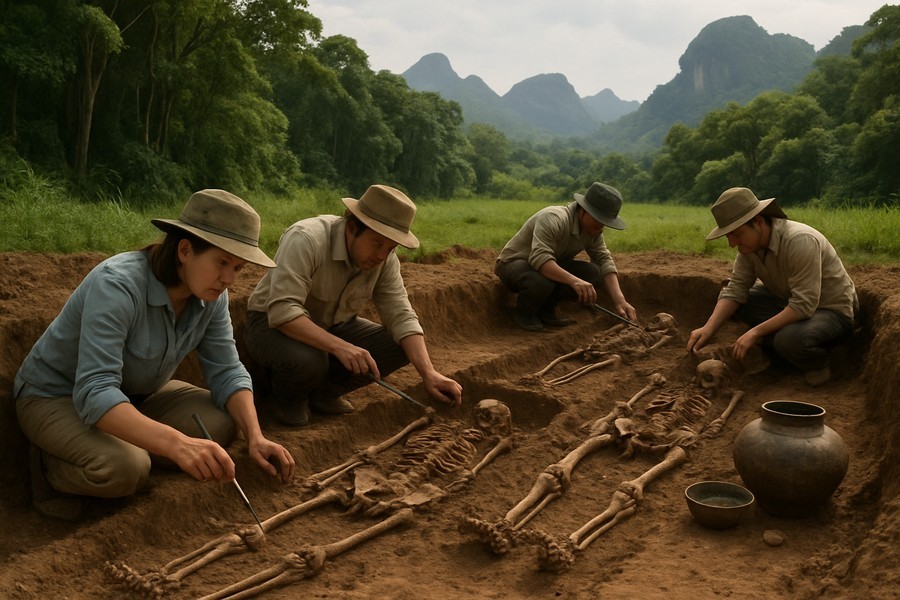
World's Most Ancient Mummies Discovered Far from Egypt
When we think about mummies, Egypt is usually the first place that comes to mind, known for its mummies dating back about 4,500 years. However, an intriguing new discovery has unveiled the existence of mummies that are significantly older and located far from Egypt, on a completely different side of the globe.
Unveiling the Ancient Mummies of Southern China and Southeast Asia
Recent research has revealed that there are numerous archaeological sites in southern China and Southeast Asia that have human burials ranging from 4,000 to a staggering 14,000 years old. This groundbreaking discovery was revealed through a comprehensive study that examined 54 pre-Neolithic burials across 11 archaeological sites in the region.
The majority of the samples were obtained from Vietnam and China's Guangxi Zhuang Autonomous Region, while the rest were gathered from several other locations such as the Philippines, Laos, Thailand, Malaysia, and Indonesia.
The Mummification Process
The ancient human remains were discovered in tightly crouched or squatting positions, with noticeable signs of burning. This suggests that the bodies had undergone a process of smoke-drying over a fire for extended durations before their eventual burial - a process that is believed to be a form of mummification.
It's believed that these mummified remains are linked to an original hunter-gatherer population that inhabited Southeast Asia during Paleolithic times and continued to prevail in places like Australia and New Guinea up until the present times.
Previous Record Holders
Prior to this discovery, the oldest known mummies were not from Egypt, but from present-day Peru and Chile. These mummies, which are approximately 7,000 years old, were prepared by the Chinchorro, a community known for their fishing skills.
Impressions on the New Findings
The discovery of the ancient mummies has left experts, including those specializing in ancient Egypt, astounded. The term 'mummy' has traditionally been used to refer to preserved bodies, and this discovery has broadened our understanding of the term.
It's been noted that the underlying concept behind mummification remains the same across different cultures - the intention to preserve the body. This commonality offers a fascinating insight into the similarities between vastly different cultures and times.
The Journey to the Discovery
The project that led to this monumental discovery began in 2017 as a casual conversation between two researchers. Over time, it expanded to involve 24 experts from various fields. The researchers have likened their work to detective work, where they had to gather pieces of evidence over many years and slowly piece them together to form a hypothesis. The discovery of these ancient mummies is a testament to their perseverance and dedication.
